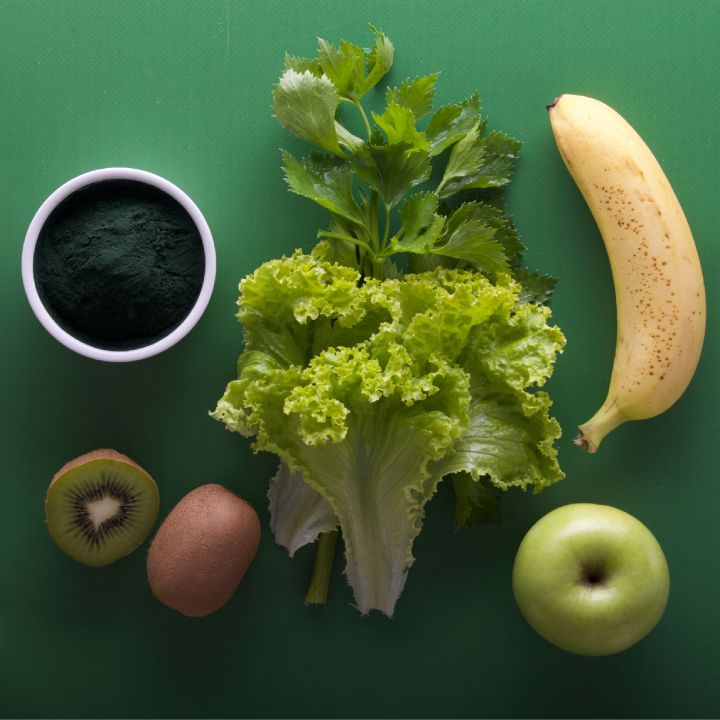Background
Atomic Habits is a book written by James Clear that discusses the importance of good habits, ways to form them, and practices to keep them. James Clear is a NY Times best-selling author, a former collegiate All-American athlete, and a renowned public speaker in the field of personal development and habit building. James has been working in the personal development space since 2012 and has developed quite a name for himself, most notably for his book, Atomic Habits. If you have ever asked for recommendations for books to help you make some positive changes in your life, this is probably the first recommendation you have received – and for good reason.
Review
Building positive habits and figuring out how to stick to them have been a big focus of mine for quite some time now. I take a good amount of pride in my ability to develop & repeat good habits and I am still always looking for ways to improve in that area. When talking with friends or anyone else who shows interest in the field of personal development and habit building, the first book that is always mentioned is the book ‘Atomic Habits’ by James Clear, so I figured it was about time I read it.
The basis of this book is something that I have preached for a while and something that I have talked about in several posts: the importance of small habits in attaining big results. In a few early posts of mine, I mention the idea of larger changes being the cumulative results of smaller, incremental changes. The beginning of this book sort of explains this idea. It attempts to portray the “atomic” effect of minuscule habits and gets you to buy in on the fact that big results can be attained from small steps. One example used to illustrate this concept is the example of an airplane’s ever-so-slightly changing trajectory on a long flight. If you consider an aircraft departing from Los Angeles to New York City… if a pilot from LAX adjusts his heading by just 3.5 degrees south, he will land in Washington, DC rather than New York. A few feet of rotation at the nose of the aircraft results in a destination hundreds of miles from the intended location. This illustrates the power that a small change you implement now has on the end goal of your trajectory. The rest of the book, however, explains best practices to implement in your life to aid in setting up and sticking to these minuscule habits. Each of the following chapters relates to what Clear calls the four laws of behavior change.
In the early parts of the book, Clear even goes into detail regarding the actual science behind habits. Every habit can be broken down into four steps: the cue, the craving, the response, and the reward. The cue initiates your brain to begin a behavior. This is what begins the process. Craving is the motivational force behind a habit. If there is no craving triggered, there is no reason to perform this action. The response is the actual habit that you perform. Once there is a cue and a craving, your body performs the habit. Following the response, there is a reward. The reward is the end goal of every habit. As Clear says in the book, ‘The cue is about noticing the reward. The craving is about wanting the reward. The response is about obtaining the reward”. This cycle of cue, craving, response, and reward is known as the habit loop. Although these ideas show how and why the body performs habits, they don’t explain how to enforce this loop in your life – That is where the four laws of behavior change come into play. These four laws are simply a practical framework that one can use to enforce their body into this positive habit-loop process. According to Clear, the four laws of behavior change are ‘Make it Obvious’, ‘Make it Attractive’, ‘Make it Easy’ & ‘Make it Satisfying’. Each of these laws will be discussed individually below.
The first law of behavior change: Make it obvious. This law corresponds to the first step in the habit loop: cue. If you want your body to accept a cue to initiate a positive habit, you need to make it as easy as possible for your body to catch this cue. You need to make it obvious. The most common cues are time & location. This means that a lot of your habits are a function of where you are doing them and when you are doing them. For example, brushing your teeth at night is a habit. When bedtime comes around and you walk to your bedroom, most people say that their mouth starts feeling a little gross as if their body knows it is time to brush their teeth. This is because your body knows that if you are in that location at that time, it is time to brush your teeth. It has been trained to know that. One practical way to take advantage of this is by a process Clear refers to as ‘Habit Stacking’. Habit stacking involves partnering some new habit you want to implement at the same time & location as a habit that you have already formed. In this case, you are sort of piggybacking off of this already-created habit to help form the new habit. An example of this would be “After I brush my teeth, I will read 10 pages of my book” or “After I pour my coffee each morning, I will meditate for one minute”. In these examples, your body already knows that you brush your teeth at night and pour coffee in the morning. By adding on these new wanted habits with these already formed habits, you are giving your body an obvious cue that you know it won’t miss. Once you have successfully stacked one good habit onto your already formed habit, you can add another & another. This is the process of habit stacking. Habit stacking is used to create good habits, but the inverse of this could also be used to delete bad habits. The inverse of the first law is to make it invisible. This is a practice that I have used for a long time and I have found it extremely effective. This concept of making it invisible essentially means that instead of making good habits obvious, you make bad habits invisible. By making bad habits invisible, you are setting up your environment in a way to not be tempted by bad cues which can be even more effective than creating good cues. In fact, research has shown that people who appear to have tremendous self-control are simply just better at structuring their lives in a way that does not require substantial willpower and self-control. One great quote from the book around this topic is that “The people with the best self-control are typically the ones who need to use it the least”. To summarize, the first step in the habit cycle can be used to create positive habits by making the wanted cue obvious, or it can be used to delete bad habits by making the negative cue invisible.
The second law of behavior change: Make it Attractive. This law corresponds to the second step in the habit loop: craving. If you want your body to crave a response, you need to make it attractive to the body & mind. The ‘craving’ sensation that human experiences can be quantified by the dopamine response in the brain. Clear states that ‘habits are a dopamine-driven feedback loop’. Every behavior that turns into a habit, whether positive or negative, corresponds to a dopamine spike in the brain: drugs, junk food, video games, sex, social interaction, etc. The biggest role of dopamine in habit building is that dopamine is not only released when you experience pleasure but also when you are anticipating it. Clear enforces this idea with the following examples: gambling addicts have a dopamine spike right before they place a bet, not after they win. Similarly, cocaine users get a surge of dopamine whenever they see powder, not when they use it. When you predict that something is going to be rewarding, your dopamine rises, and therefore so does your motivation to act. One way to take advantage of this idea to form good habits is to use Clear’s strategy of ‘temptation bundling’. Temptation bundling involves linking an action that you want to do with an action that you need to do. An example of this strategy is only allowing yourself to watch Netflix if you are riding a stationary bike while you do it. You want to watch Netflix, but you need to do more exercise. By implementing this strategy, you are giving your body a craving to perform exercise because it is anticipating that you will also get to watch Netflix. One can even go one step further by combining the aforementioned habit stacking with temptation bundling. This structure, according to Clear, looks like this: “After I {current habit}, I will {habit I need}. After I {habit I need}, I will {habit I want}”. Like the first law, there is an inverse of the second law used to negate bad habits. The inverse of ‘Make it Attractive’ is to ‘Make it unattractive’. This is done by highlighting the benefits of avoiding a bad habit rather than focusing on the benefits of receiving the bad habit. For example, instead of focusing on the immediate satisfaction of eating an unhealthy meal, focus on the fact that you will feel sluggish and uncomfortable an hour later. The benefit of avoiding this bad habit is that you will look better and feel better over a prolonged period of time. In order to get your body to crave a good habit, you have to make it attractive.
The third law of behavior change: Make it Easy. In order to convince your body and mind to perform a habit, it needs to not be overly complicated or strenuous. Clear states that the most important aspect of the third law (response) is that at the beginning, you just simply need to get your reps in. If your body and mind are not used to performing an action, it needs to be eased in to. English Philosopher George H. Lewes noted that “when performing unaccustomed movements, great difficulty is felt because of the channels through which sensation has to pass have not become established; but no sooner has frequent repetition cut a pathway than this difficulty vanishes; the actions become so automatic that they can be performed while the mind is otherwise engaged”. This quote exemplifies the importance of making a new habit ‘easy’. New habits seem difficult at first because they are new to the body & mind and they have not adjusted to them yet. Once you get your reps in, these actions become easier & easier and at some point, it gets to where your mind & body can perform them without much thought. It is a lot easier to ‘get your reps in’ when the required response is easy. Another reason to make the required response/action easy is because of the law of least effort. The law of least effort essentially states the obvious: humans are wired to favor the easier route rather than the difficult one. One way to take advantage of this law is to remove friction from your habits. Clear states that ‘trying to pump motivation to stick with a hard habit is like trying to force water through a bent hose’. You can do it, but it increases tension in your life. Making your habits simple & easy is just like removing the kink from the hose. You can work on removing these kinks by not only making the habit easy but also by the environmental design discussed in the chapter regarding the first law of behavior change. Once you establish the response, you can work on increasing the intensity of the response. ‘Standardize before you optimize’. As with the other laws, there is a way to invert this law to negate bad habits. The inverse of ‘Make it Easy’ is ‘Make it Difficult’. This involves introducing friction between you and the bad habits you want to avoid. An example of this is unplugging the TV and disconnecting the TV from the wifi after every Netflix binge. This way, if you ever want to binge-watch Netflix, you have to convince yourself to replug in the TV and reconnect your TV to the wifi. This amount of friction may be just enough to keep you from performing the negative habit. For you to be able to convince your mind and body to respond to a cue & a craving, you have to make the response easy. Use the law of least effort to your advantage.
The fourth law of behavior change: Make it Satisfying. This law corresponds to the fourth and final step in the habit loop: reward. The best way to convince your body to perform a good habit is to convince it that if it does said habit, it will be rewarded. If the overall experience is pleasurable for you, you will rightfully want to repeat it. Clear describes this idea by the quote “Feelings of pleasure – even minor ones like washing your hands with soap that smells nice and lathers well – are signals that tell the brain “This feels good. Do this again, next time”. Pleasure teaches your brain that behavior is worth remembering and repeating”. The cardinal rule of behavior change is ‘what is rewarded is repeated, & what is punished is avoided’. The fourth law is the one that ties the whole loop together. It is stated that ‘The first three laws of behavior change – make it obvious, make it attractive, make it easy – increase the odds that a behavior will be performed this time. The fourth law of behavior change – make it satisfying – increase the odds that a behavior will be repeated next time’. Although the overall goal of positive habit-building is to receive delayed gratification from the larger end goal, it is important to take advantage of instant gratification throughout the process to keep your mind & body invested in the process. ‘Immediate rewards are essential because they keep you excited while the delayed rewards accumulate in the background’. Instant gratification is engrained in human nature. In order to make habits feasible, you need to work with human nature – not against it. Again, similar to the other laws, this law can be inverted to get rid of bad habits. The inverse law of ‘Make it Satisfying’ is to ‘Make it Unsatisfying’. This is a practice that is seen in everyday life whether you realize it or not. One obvious example is laws. In order to hold citizens accountable and keep them from performing unwanted acts, laws are implemented with the intention to make these actions unsatisfying. One way to implement this strategy in your life is through an accountability partner or a habit contract. The purpose of these strategies is to make bad habits unsatisfying, whether they are enforced by yourself or a partner. One example of this could be an accountability group where every time you perform an unwanted habit, you put money into a jar. The parter with the lease amount of unwanted habits performed at the end of a challenge gets to keep the money in the jar. For you to be able to ensure that a habit is going to be not only doable but more importantly repeatable, you need to make sure the habit is satisfying.
Despite the lengthy nature of this post, I was not able to nearly encapsulate all of the golden nuggets sprinkled throughout this book. Throughout the book, there is a multitude of real-life examples and stories used to further engrain these ideas as well as dozens of practical use cases for implementing each strategy. As I mentioned before, I pride myself heavily on building and keeping positive habits and I have personally employed a majority of the strategies mentioned in this book before I even read it. Because of this, I can personally and willfully vouch for the practicality and effectiveness of implementing the strategies discussed in this book. Unfortunately, I had to learn a lot of these on my own through trial and error, but luckily you don’t have to. If you are someone who struggles with creating good habits and getting rid of bad ones, I highly recommend reading through this book and giving the strategies a chance. You won’t regret it.


